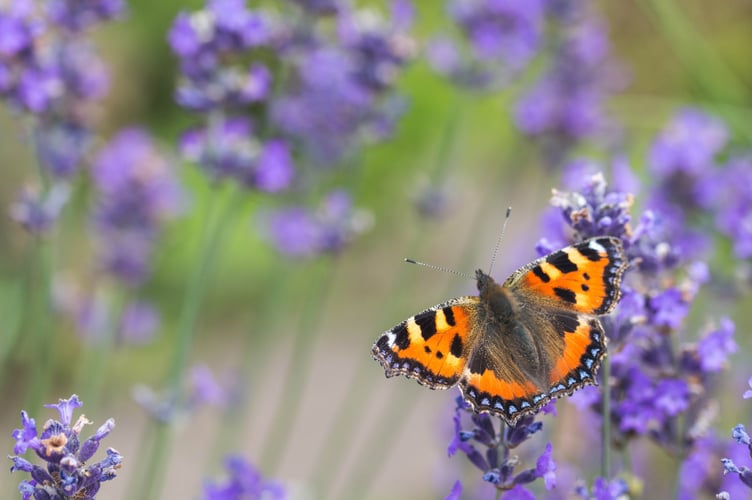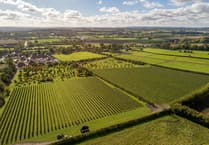BUTTERFLIES are summer creatures. We love to watch them fluttering from flower to flower in search of nectar on warm summer days.
We love their beauty: their delicate wings and bright colours in the summer sun. We are awestruck by the change – the metamorphosis – from an unattractive caterpillar to a beautiful butterfly. And butterflies play an important role in pollination and maintaining biodiversity: they are vital to help to keep the balance of nature.
But in winter? Butterflies are still all around us, but hidden from view. Most species spend the coldest months in a dormant state, similar to hibernation in animals.
Most of our native butterflies pass the winter as a dormant egg, caterpillar (larva) or chrysalis (pupa), depending on the species, but a few spend the winter as adult butterflies. When temperatures drop during the autumn they seek refuge in sheds, outbuildings, log piles and caves to remain relatively warm and dry.
Sometimes they overwinter in this dormant state inside our homes. The two you’re most likely to find inside your house are the small tortoiseshell and the peacock.
When temperatures rise they wake up and become active again.
There’s been some bad news about butterflies this winter. A report just published reveals that 80% of butterfly species in the UK have declined since the 1970s.

“The State of the UK’s Butterflies 2022” report, published by the charity Butterfly Conservation, is a sobering read. There are winners and losers but, on average, UK butterflies have lost 6% of their total abundance at monitored sites and 42% of their distribution over the period 1976-2019.
The 28 page report reveals which are the winners and losers for each of the UK’s 59 species of breeding butterflies. It includes breakdowns for each of our four home nations.
In Surrey, we are lucky to have a variety of specialist habits, such as flower-rich grassland, chalk downs, heathland and woodland, each the home of habitat-specialist species. The report says that as a group the numbers of species restricted to particular habitats has decreased by more than one-quarter (-27%) and their distribution by more than two-thirds (-68%) since 1976.
Wider countryside species – butterflies that can breed in the farmed countryside and in urban areas – have fared less badly, although as a group they have decreased since 1976 (-17% in abundance and -8% in distribution).
Butterfly Conservation says decreases in butterfly populations on the scales described in the report are a huge cause for concern as butterflies are an integral part of the UK ecosystem and their decline is a clear warning signal of a wider biodiversity crisis.
But it is not all bad news: Butterfly Conservation’s report shows that its targeted conservation work has been very effective at halting declines.
You can help butterflies if you have a garden. Adult butterflies and other pollinators feed on nectar that they will take from a wide variety of wild and garden flowers. You can start sowing your seeds in just a few weeks!
There’s lots of other advice on helping butterflies on Butterfly Conservation’s web site www.butterfly-conservation.org, where you can also download a copy of “The State of the UK’s Butterflies 2022”.




